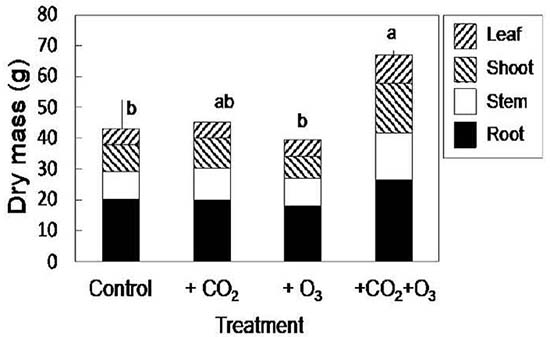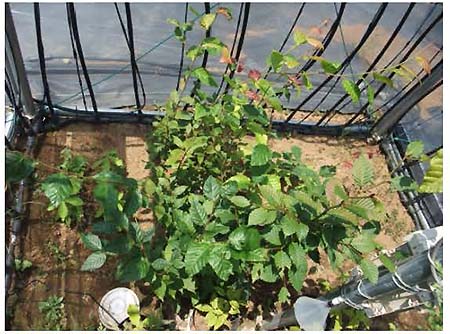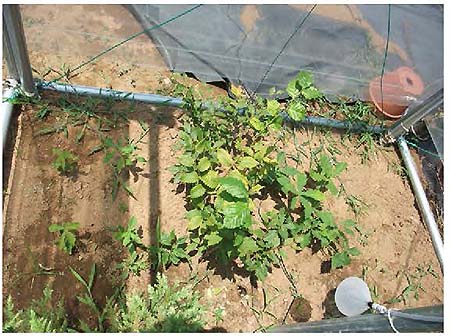Home > Research > Research Results > Research Results 2020 > The growth of Japanese beech seedlings was promoted by rising concentrations of CO2 in an air pollution environment
Update:July 20, 2020
Main content starts here.
The growth of Japanese beech seedlings was promoted by rising concentrations of CO2 in an air pollution environment
| Article title |
Effects of combined CO2 and O3 exposures on net CO2 assimilation and biomass allocation in seedlings of the late-successional Fagus crenata. |
|---|---|
| Author (affiliation) |
Hiroyuki Tobita (a), Masabumi Komatsu (b), Hisanori Harayama (c), Kenichi Yazaki (a), Satoshi Kitaoka (a)(d), Mitsutoshi Kitao (c) (a) Department of Plant Ecology, FFPRI, Tsukuba, Ibaraki, Japan. (b) Department of Mushroom Science and Forest Microbiology, FFPRI, Tsukuba, Ibaraki, Japan. (c) Hokkaido Research Center, FFPRI, Sapporo, Hokkaido, Japan. (d) Hokkaido University, Sapporo, Hokkaido, Japan. |
| Publication Journal |
Climate, 7:117, 2019 DOI:10.3390/cli7100117( External link ) |
| Content introduction |
It is predicted that increased carbon dioxide (CO2) concentrations in the atmosphere due to the consumption of fossil fuels, etc., will enhance photosynthesis and stimulate the growth of trees. However, it is feared that concentrations of ozone (O3) in transnational air pollution that have been increasing in conjunction with economic growth are hindering photosynthesis in trees and having a negative impact on their growth. In fact, it is known that Japanese beech (Fagus crenata) is highly susceptible to stress from rising O3 concentrations under the present CO2 environments. Therefore, in order to predict the effects that changes in the concentrations of these atmospheric gases will have on the growth of trees, Japanese beech seedlings were grown under environmental conditions of high concentrations of either CO2 or O3, and high concentrations of both, and compared with those grown under the current CO2 /O3 environment. Stomatal conductance was also investigated because damage occurs when stomata are opened and take in O3. As a result, it was found that when concentrations of O3 increased under a high CO2 environment, the growth of beech seedlings was enhanced compared with the current CO2 and O3 environments (Fig.). A possible reason for this may have been that under an environment of high CO2 and O3, stomata tended to close, reducing the amount of O3 that was absorbed while enhancing the photosynthesis of leaves and increasing the amount of leaves in young trees. Given the above findings, we could see that under environments having high concentrations of both CO2 and O3, the growth of beech seedlings was promoted in a manner that differed from their growth under high concentrations of just O3. These results will be useful for predicting the growth response of Japanese beech (Fagus crenata) to future changes in the concentrations of atmospheric gases, as well as for predicting carbon assimilation.
Figure: Dry mass of whole plant and each tissue (leaf weight; Leaf, shoot weight; Shoot, stem weight; Stem, root weight; Root) of the seedling of Fagus crenata grown under ambient air (control), elevated CO2 (+CO2), elevated O3 (+O3), and the combination of elevated CO2 and O3 (+CO2+O3). Values are means ± SE of three replicates for each treatment. Different letters indicate significant difference among treatments at 5% level by Tukey-Kramer multiple range test. The growth of Fagus crenata seedlings grown under +CO2+O3 treatment was stimulated compared to the seedlings grown under control.
Photo: Fagus crenata seedlings grown under the combination of elevated CO2 and O3 (+CO2+O3) (left photo) and under ambient air (control) (right photo). |
Copyright © Forest Research and Management Organization. All rights reserved.



